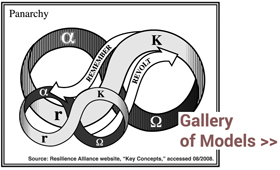I collect design principles. Some are identified as design principles, others not; but they are unmistakable anyway. These are not the “what we stand for” or “why we do what we do” principles. These are the “how” principles: high-level guidelines that inform the selection and development of methods or practices, heuristics for effective engagement in the world.
The best ones are intriguing, informative, and also revealing about the perceived design context. In other words, they offer a glimpse into a designer’s conception of the design environment, with its constraints and affordances.
Buzz Holling, for example, summarized in a 2011 talk his lifetime of adaptive ecosystem management experience as a set of guidelines. Then, in software development, there’s the agile manifesto, which to my ears sounds a lot like Holling.
Holling: Much of established theory is severely limited at the time — too simplistic, too static, too uniform in scale and perceived by the originators as too certain. The fixed world of standard environmental protection is rigid and wrong.
Agile Manifesto: Working software over comprehensive documentation. Responding to change over following a plan.
Gar Alperovitz’s principles are for the design of a pluralist commonwealth. Jeff Leitner’s are for the design of design labs. Elinor Ostrom’s well-known principles about sustaining common pool resources are better re-imagined in the active voice.
Then there’s Kevin Kelly, whose so-called laws of god are for “governing the incubation of somethings from nothing.”
Distribute being.
Control from the bottom up.
Cultivate increasing returns.
Grow by chunking.
Maximize the fringes.
Honor your errors.
Pursue no optima; have multiple goals.
Seek persistent disequilibrium.
Change changes itself.
Got any design principles? What are your favorites?

